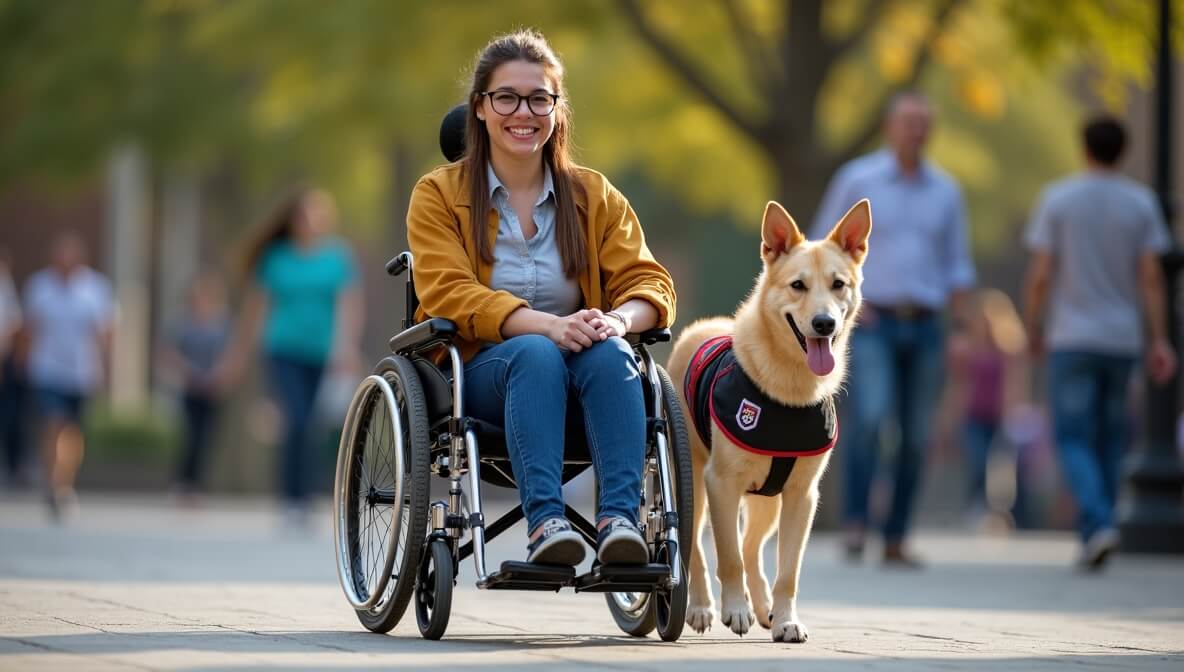August 22, 2025

Service animals are more than highly trained companions—they are dedicated partners in daily life for individuals living with disabilities. Whether guiding someone through a crowded train station or interrupting an oncoming anxiety attack, these animals empower their handlers to live with dignity, autonomy, and confidence.
As our society continues to prioritize accessibility and inclusion, service animals are at the forefront of this progress—helping to remove barriers not just physically, but socially and emotionally.
According to the Americans with Disabilities Act (ADA), a service animal is defined as a dog (or in limited cases, a miniature horse) individually trained to perform tasks for a person with a disability. This includes physical, sensory, psychiatric, intellectual, or mental health conditions. Importantly, service animals are not pets—they are considered medical aids, much like a wheelchair or hearing device.
Common tasks include:
Explore official ADA guidance here: ADA National Network – Service Animals
While service animals are primarily trained for physical or behavioral tasks, their emotional presence is equally transformative. For individuals living with:
…a well-trained service dog can act as a stabilizing force—interrupting panic attacks, creating physical buffers in crowds, or simply providing nonjudgmental comfort.
A 2022 review in the Journal of Psychiatric Research found that veterans with PTSD who used psychiatric service dogs reported fewer suicidal thoughts, improved sleep, and greater social interaction than those without.
This mirrors how creative therapies like music or art help process emotion, as outlined in How to Develop Perfect Pitch. In both cases, trained interventions enable healing and self-regulation.
Service animals aren’t just transforming individual lives—they’re helping reshape public perception about disability, autonomy, and inclusion.
Their presence in:
…signals to others that disabilities are not limitations, but challenges that, with proper support, can be navigated and overcome.
Just as music production tools like sample packs make creativity more accessible to novice musicians, service animal programs ensure independence is not a luxury—but a right that can be equitably distributed.
Despite their importance, service animal handlers still face barriers:
Raising awareness through education and legislation remains critical. That’s why advocacy organizations like Assistance Dogs International and Canine Companions continue to push for universal standards and increased access to funding.
Even if you’re not directly impacted, you can help foster a more inclusive environment:
For more info: ADA Business Brief on Service Animals
A service animal is not just a helper—they are a lifeline, a guardian, and often a person’s closest ally. Their role blends discipline, compassion, trust, and purpose—qualities that strengthen both individual well-being and societal inclusion.
As we work to create a more accessible and empathetic world, recognizing and respecting the role of service animals is a vital step forward.
Let’s build a future where no one is limited by their disability—and where every qualified person who needs a service animal has access to one.
Stay up to date with the latest tips, expert insights, product reviews, and step-by-step guides to help you grow, create, and succeed—no matter your industry or passion.